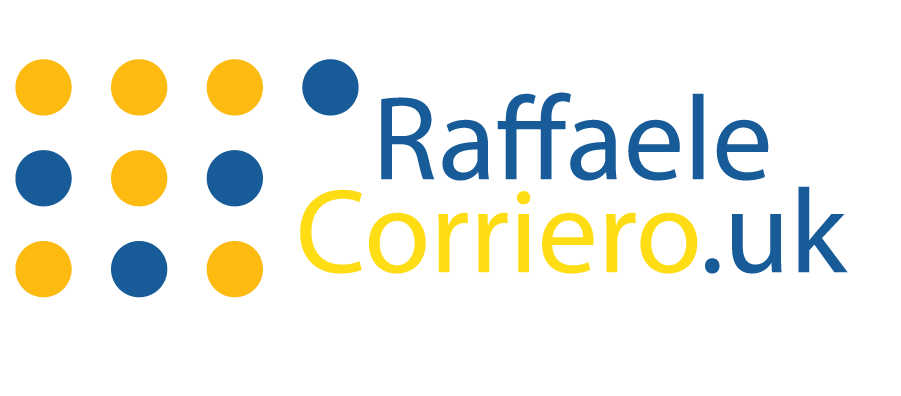Do you know that nearly 75% of internet users don’t go beyond the first page of search results? This fact shows how vital it is to use strong SEO strategies. These strategies help improve your site’s natural rankings and boost your efforts in search engine optimisation. Experts have shared insights here that have helped websites reach the top position for thousands of keywords.
If you’re starting or want to improve, these 20 SEO tips can help make your site more visible on search engines. They include doing in-depth keyword research and enhancing core web vitals. The aim is to not just get a better ranking. It’s also about bringing more visitors to your site.
Key Takeaways
- Effective SEO strategies are crucial for improving organic rankings.
- Conducting comprehensive keyword research greatly enhances search engine optimisation.
- Well-structured, high-quality content is essential for higher rankings.
- Optimised core web vitals can improve user experience and SEO performance.
- A strategic approach incorporating multiple SEO tactics can elevate your website’s visibility.
Target Relevant Primary and Secondary Keywords
Understanding the difference between primary and secondary keywords is key for SEO success. Primary keywords are the main terms you want to rank for. Secondary keywords add more context, helping to enrich your content.
Definition of Primary and Secondary Keywords
Primary keywords form the base of your keyword strategy, matching the main topic. Secondary keywords provide support, adding depth and improving relevancy.
How to Conduct Keyword Research
To start your SEO strategy, thorough keyword research is essential. Use trusted tools to find keywords your audience loves. Tools like the
Using Keyword Tools Effectively
Using keyword research tools correctly is vital. For example, the Keyword Magic Tool gives insights to help you choose the best keywords. By doing this, your content will better match what people are searching for. This increases your chances of ranking higher.
Incorporating both primary and secondary keywords boosts your SEO. It also makes your content more enjoyable and informative for readers.
Write High-Quality, Original Content
Creating top-notch, original content is key for good SEO. It grabs your audience’s attention and boosts your website’s trustworthiness. Tools like Semrush’s SEO Writing Assistant help you check your content’s quality thoroughly.
Characteristics of High-Quality Content
Top-quality content delivers great value to its readers. It answers their questions, solves problems, and fully meets their needs. It’s informative and engaging, supported by facts and examples. SEO content analysis tools ensure it stays that way.
Importance of Originality in Content
Being original makes your content stand out amid all the information online. Unique content keeps your site reliable and transparent. Tools like Semrush’s SEO Writing Assistant check content for uniqueness. This prevents copying and boosts your quality. Staying original also builds trust with your visitors, making your site more credible.
Format Your Content for Readers (and Search Engines)

Making your content easy to read and attractive is key. It needs to grab attention and boost SEO. Readable content makes for a great user experience, which search engines love.
Impact of Readability on SEO
How easy your content is to read affects how long people stay on your site. It’s important to keep them engaged. If people leave quickly, search engines might think your content isn’t good. So, readability is vital for both users and your SEO score.
Best Practices for Content Formatting
To make your content engaging, follow these tips:
- Use clear headings and subheadings to help readers navigate.
- Write short paragraphs that are easy to scan.
- Use bullet points and lists to simplify complex info and spotlight key ideas.
- Add pictures or infographics to make the text more interesting.
By combining these methods, you improve readability and keep users interested. This leads to better SEO as your content attracts and keeps more visitors.
Boost CTR with Compelling Title Tags and Meta Descriptions
Making your website stand out starts with improving your click-through rate (CTR). You need to create powerful title tags and meta descriptions. These should make people want to click your link. By doing this well, you’ll likely see more people visiting your website.
Crafting Effective Title Tags
Successful title tags begin with focusing on SEO. Your title should be short and include the main keyword. This helps your page show up higher in search results. Aim for a title that is between 55 to 60 characters to ensure it shows fully in searches.
- Include target keywords naturally.
- Avoid keyword stuffing; maintain readability and flow.
- Use power words to evoke curiosity and urgency.
Writing Persuasive Meta Descriptions
Meta descriptions are key to getting clicks. They summarise your page and should include important keywords. This makes it easier for people to find your content when they search online.
- Keep it within 150-160 characters for optimal length.
- Incorporate a clear call-to-action (CTA) to prompt clicks.
- Ensure it accurately represents the page content to avoid high bounce rates.
It’s important to regularly check and update your title tags and meta descriptions. This helps to keep your content relevant and can improve your CTR. As search trends change, so should your strategies for SEO.
Use Short, Descriptive URLs
Making your URLs short and meaningful is key for good web content management. They’re easier to read and help with SEO.
Best Practices for URL Structure
To make your URLs great, follow these guidelines:
- Keep URLs as concise as possible while still being descriptive.
- Incorporate relevant keywords in the URL naturally.
- Use hyphens to separate words for better readability.
- Avoid using unnecessary parameters and special characters.
- Ensure consistency in your URL structure across your website.
Benefits of Short URLs for SEO
Short URLs bring many SEO benefits. They improve user experience and are easier to share. This can boost site traffic.
A simple URL structure helps search engines like your site more. This boosts your SEO. Following these tips will help your website and keep users happy.
Get Backlinks from High-Authority Websites

Backlink acquisition is crucial for SEO, highlighting your content’s trust and relevance. Gaining high-authority backlinks boosts your site’s credibility, possibly improving your search rankings. It’s essential to get these links from well-known sources.
Importance of Backlinks
Backlinks serve as endorsements, boosting your site’s reliability and stature. Search engines favor high-authority backlinks, seeing them as signs of quality content. This can greatly improve your site’s ranking.
Strategies for Acquiring Quality Backlinks
It’s vital to use effective strategies for link-building. Here are some top methods:
- Guest Blogging: Contribute articles to leading websites in your area. This builds backlinks and establishes you as a knowledgeable expert.
- Create Shareable Content: Make content that invites others to link to it. Tools like infographics and detailed guides work well.
- Outreach: Actively approach influencers and bloggers. Show them your content and ask for backlinks.
- Utilise Tools: Use platforms like Ahrefs or Moz to find high-authority sites for backlinks.
Using these methods will raise your website’s authority. This makes your site more appealing to both search engines and visitors.
Improve Your Core Web Vitals for a Better User Experience
In today’s digital world, making your website user-friendly is key. Core Web Vitals are crucial for a great user interface. They help improve how users interact with your site.
Understanding Core Web Vitals
Google introduced Core Web Vitals to measure a site’s user experience. They look at three things: Largest Contentful Paint (LCP) for how fast a page loads, First Input Delay (FID) for how quickly it responds to clicks, and Cumulative Layout Shift (CLS) for how stable it is while loading. It’s important to get these right.
Techniques for Optimising Core Web Vitals
To make your Core Web Vitals better, try these tips:
- Improve Loading Speed: Make your server respond faster and use smaller images to speed up loading.
- Enhance First Input Delay: Cut down on how long JavaScript takes to run and use fewer external scripts to make interactions smoother.
- Increase Visual Stability: Use proper sizes for images and embed ads to prevent layout changes, making the page more stable.
Working on your Core Web Vitals can greatly boost how well your website performs. This can make your website more enjoyable for users and might even help with search engine placements.
The 20 Most Important SEO Tips for Higher Rankings
Using the best SEO strategies is key for better search ranking positions. This article provides essential SEO guidance. It will help you increase web traffic and make your online presence stronger.
To lift your website’s performance, follow these steps:
- Conduct thorough keyword research to target the most relevant search terms.
- Create high-quality, original content tailored to your audience.
- Format content to enhance readability for users and search engines alike.
- Optimise title tags and meta descriptions to improve click-through rates.
- Utilise short, descriptive URLs for better SEO performance.
- Acquire backlinks from high-authority websites to establish credibility.
- Optimise Core Web Vitals to enhance user experience.
- Increase internal and external linking for improved site structure.
- Optimise images and other visual assets for faster load times.
- Ensure content aligns with user search intent.
- Analyse competitors to refine your own SEO strategies.
- Enhance website architecture for easier navigation.
- Use Calls to Action (CTAs) to drive user engagement.
- Build topic clusters to organise content thematically.
- Continuously monitor and adjust SEO tactics based on performance data.
- Improve site load speed to retain visitors and reduce bounce rates.
- Employ schema markup to make your content more search-friendly.
- Regularly update and refresh content to maintain relevance.
- Utilise social media to amplify your website’s reach.
- Ensure your website is mobile-friendly to cater to mobile users.
Following these 20 essential SEO tips will significantly improve your search rankings, boost web traffic, and enhance user experience. Keep up-to-date with SEO changes and watch your online visibility grow.
Use Internal and External Links Wisely

Both internal and external links are key for your site’s SEO. By placing links smartly in your content, you’ll boost the user experience and SEO. We’ll look at the advantages and methods of using links.
Benefits of Internal Linking
Internal linking strengthens your site’s structure. It connects related pages, making it easier for users to find what they need. This reduces bounce rates and keeps visitors on your site longer.
Internal links also spread link equity, boosting the rankings of your pages. This improves your overall SEO.
Best Practices for External Linking
For external links, choose reputable sources. This makes your content more trustworthy to users and search engines. It backs up your points and gives readers extra info.
Avoid links to low-quality sites as they can harm your site’s reputation. Proper link use enhances both user experience and SEO. Smart linking is essential for the best outcomes.
Optimize Images, Graphics, and Other Visual Assets
Optimising images and graphics is key for SEO today. Visual elements like images and infographics make your site more attractive. Let’s look into why this matters and ways to improve your image optimisation.
Importance of Optimising Visuals for SEO
Visual content is crucial for your site’s image and search ranking. Making visuals SEO-friendly boosts page load speed, important for users and search rankings. It also helps search engines find your images, increasing your site’s visibility.
Techniques for Image Optimisation
To boost your image SEO, you can use several methods:
- File Size Reduction: Compress images for quicker loading, without losing quality.
- Descriptive File Naming: Include keywords in image names to help search engines understand what they’re about.
- Alt Text: Add descriptive, keyword-rich alt text for search indexing and better accessibility.
- Responsive Images: Use responsive design so your images look good on all devices.
Using these SEO techniques for graphics will improve your site’s performance, visibility, and user friendliness.
Understand Search Intent and Create Content that Matches It
Knowing what users aim for when they search online is key. They might want information or to buy something. Making sure your content meets their needs boosts satisfaction.
First, figure out if the search is for info, a website, or to purchase. Each kind calls for a different approach. For example, someone may look for advice or want to buy.
Look at top content for keywords to get what users prefer. Does it give in-depth info, choices, or quick facts? This helps make your content fit what’s expected.
Content that fits search intent boosts your site’s ranking and user experience. It meets users’ needs with useful, easy-to-understand info. This can lower how often people leave your site quickly.
Moreover, such content builds trust and shows your authority, helping SEO in the long run. Sticking to this approach helps your content appeal more to users, improving your site’s impact and engagement.
Identify Your Most Important Organic Search Competitors

It’s vital to know your SEO rivals to improve your strategies. Learning from the top players in your field helps. This knowledge helps make your site more visible on search engines.
Start by finding who ranks higher than you for key words. Tools like Ahrefs and SEMrush are great for insights into rivals’ SEO tactics. By looking at their best content, links, and keywords, you can see what works best.
List your main competitors and study what makes them successful. Use a spreadsheet to keep track of things like keyword rankings and site authority. This helps understand the SEO competition better. It shows where you can get better and find chances to get ahead.
Also, watch the SEO competition closely. Stay up-to-date with trends and adjust your plans as needed. Learning from both strong and weak points of rivals helps boost your SEO. This leads to higher ranks and more viewers.
- Identify top competitors in your niche.
- Utilise SEO tools to gather data on their strategies.
- Analyse their top-performing content and backlink profiles.
- Create a comparative analysis to spot opportunities and gaps.
By carefully analyzing rivals and keeping up with the SEO scene, you get the knowledge to excel in the tough world of SEO competition.
Optimize Your Website Architecture
A great website structure is key to a good user experience and smooth navigation. It’s also crucial for search engines. They can find and organise content better, which might boost your site’s ranking.
Key Elements of Effective Website Architecture
A user-friendly website needs a solid structure and clear navigation. Important features to include are:
- Hierarchy: A clear hierarchy ensures that users can move easily from the homepage to other pages.
- Navigation: Menus and links that are easy to use improve how people move through your site.
- URL structure: URLs that describe your content well are good for both users and search engines.
How to Improve Site Navigation
To better your site’s SEO through design, focus on navigation. Here are some tips:
- Breadcrumbs: Breadcrumbs help users understand where they are on your site.
- Sitemaps: Sitemaps in XML and HTML help search engines crawl and index your site more effectively.
- Responsive Design: A mobile-friendly site gives a better experience on all devices.
Leverage CTAs Throughout Your Site
CTAs are not just buttons or links. They are chances for users to engage and take steps you want on your site. By using CTAs wisely, you can boost engagement and improve conversion rates.
Importance of Calls to Action
CTAs turn visitor interest into engagement. They lead users towards actions like subscribing or buying. They’re key for boosting user interaction and meeting website goals.
Best Practices for Crafting CTAs
Keep user intent in mind while making CTAs. Use clear action words like “Subscribe”, “Download”, or “Join”. Make sure the CTA pops by using bright colours and good placement.
Testing different CTA designs helps find the most effective ones. This can lead to better conversion rates. Good CTAs not only meet website targets but also make users happier, increasing the chance of more conversions.
Build Topic Clusters
Creating a good topic cluster model can greatly improve your SEO efforts. Topic clusters form a content hierarchy that links related pieces to a main pillar page. This page is a key resource on a topic, with links to more specific content.
This setup not only organises your content by theme but also makes you more credible to search engines.
What are Topic Clusters?
Topic clusters focus on a main theme through a pillar page. The pillar page fully covers the core topic. Cluster content then explores subtopics in detail, relating to the main theme.
This structure improves the user experience and helps search engines understand and rank your content better.
Steps to Create Topic Clusters
To create topic clusters, first, pick a broad topic for your SEO strategy. Build a comprehensive pillar page as your cluster’s anchor. Then, find subtopics and develop detailed content around them, linking back to the pillar page.
This linking shows your content’s coherence and depth, boosting your site’s organisation. A successful topic cluster model makes your content relevant and easy to find. It also improves your website’s structure, helping achieve better SEO results, more organic traffic, and growth.







